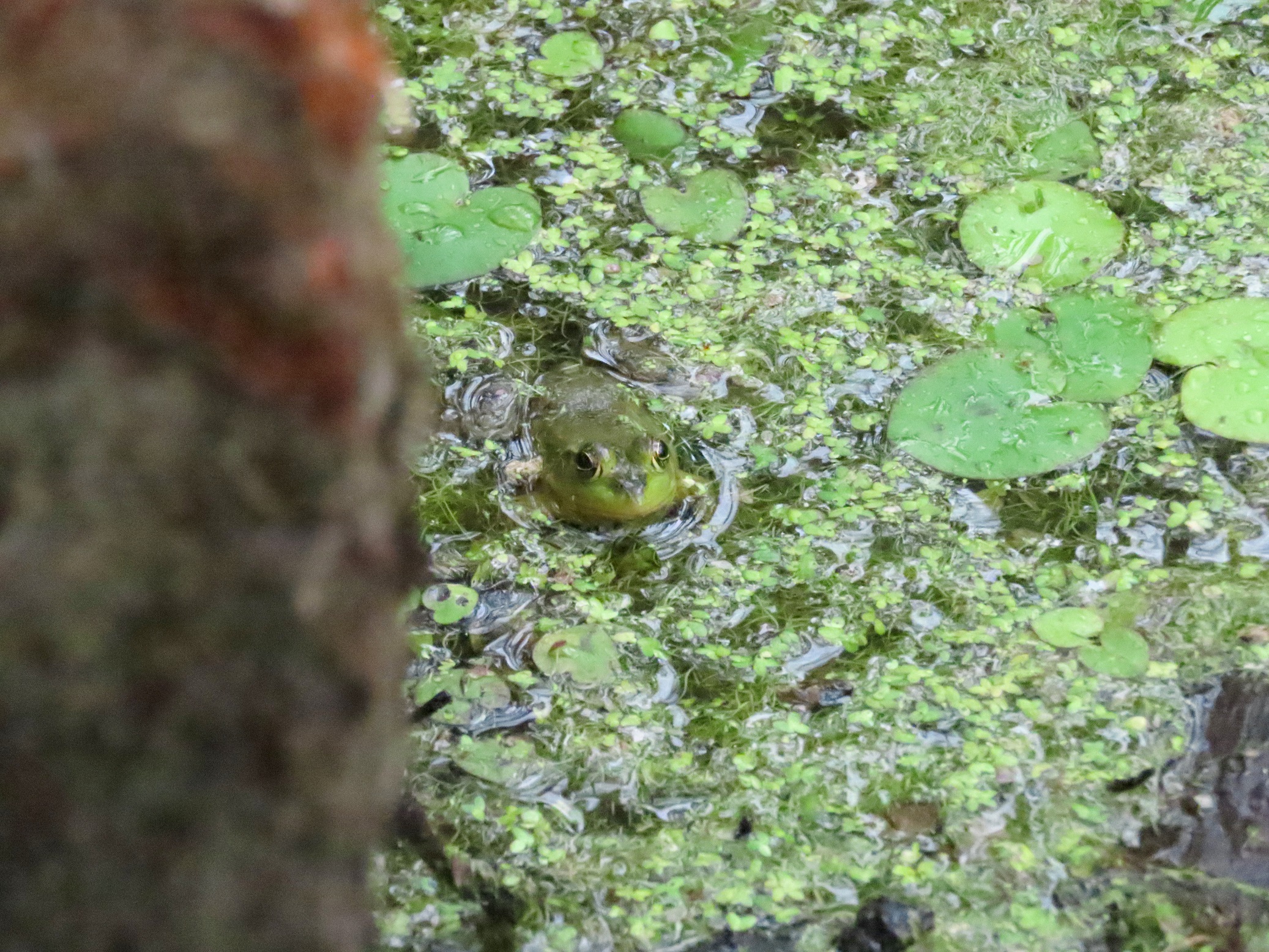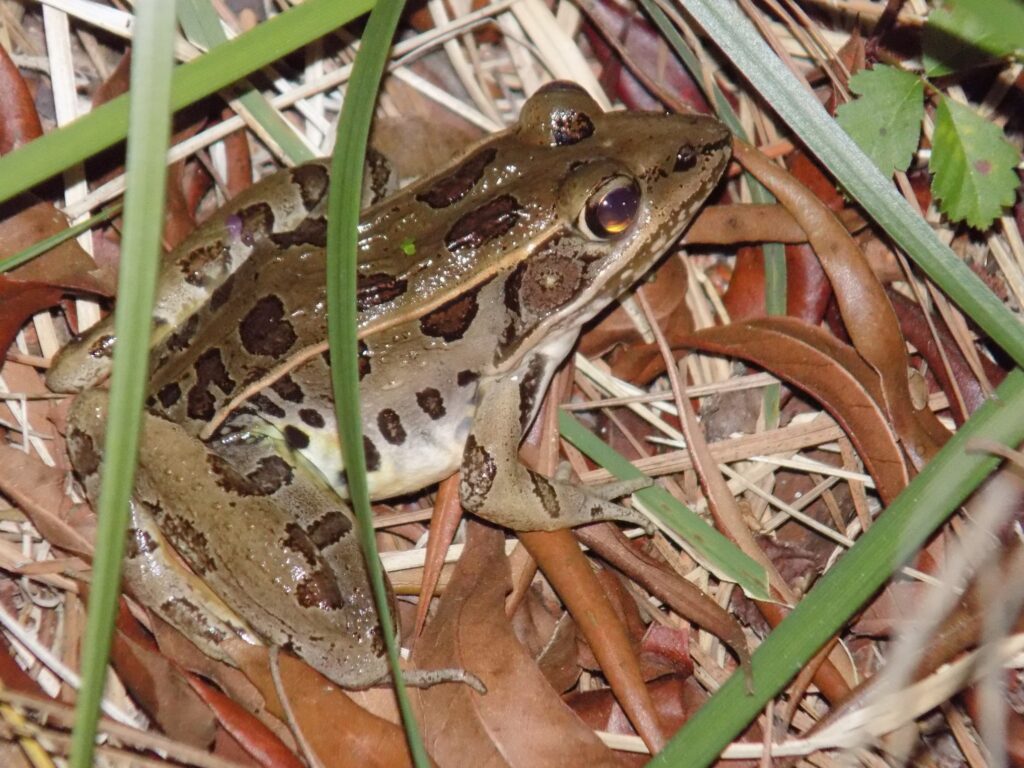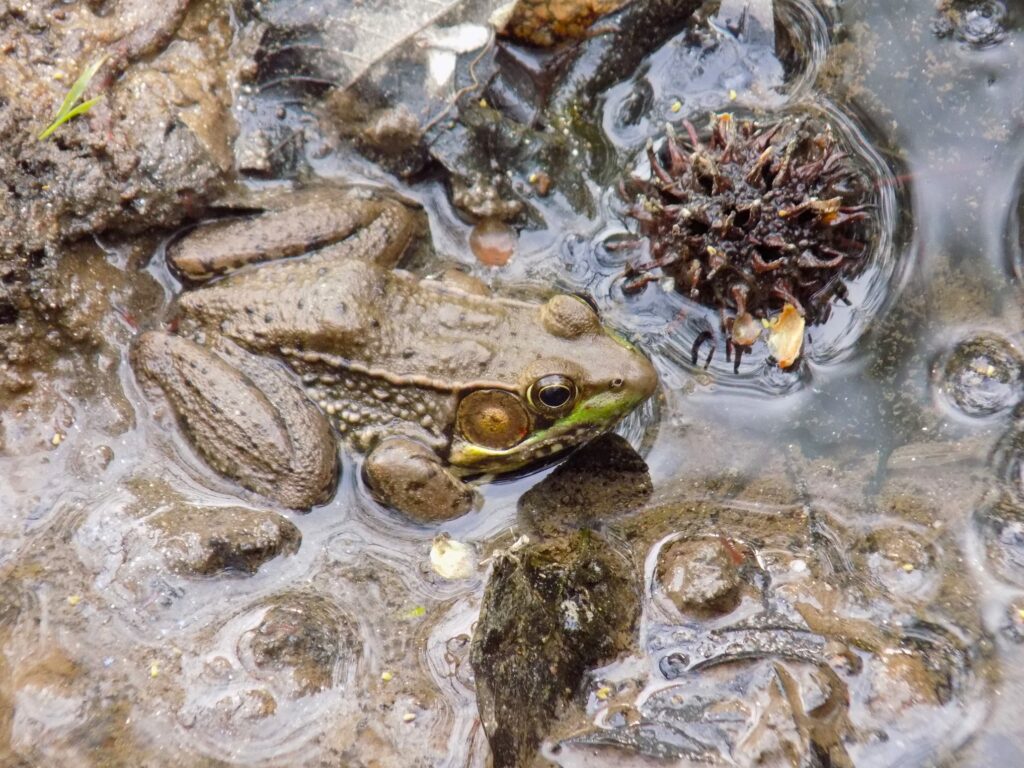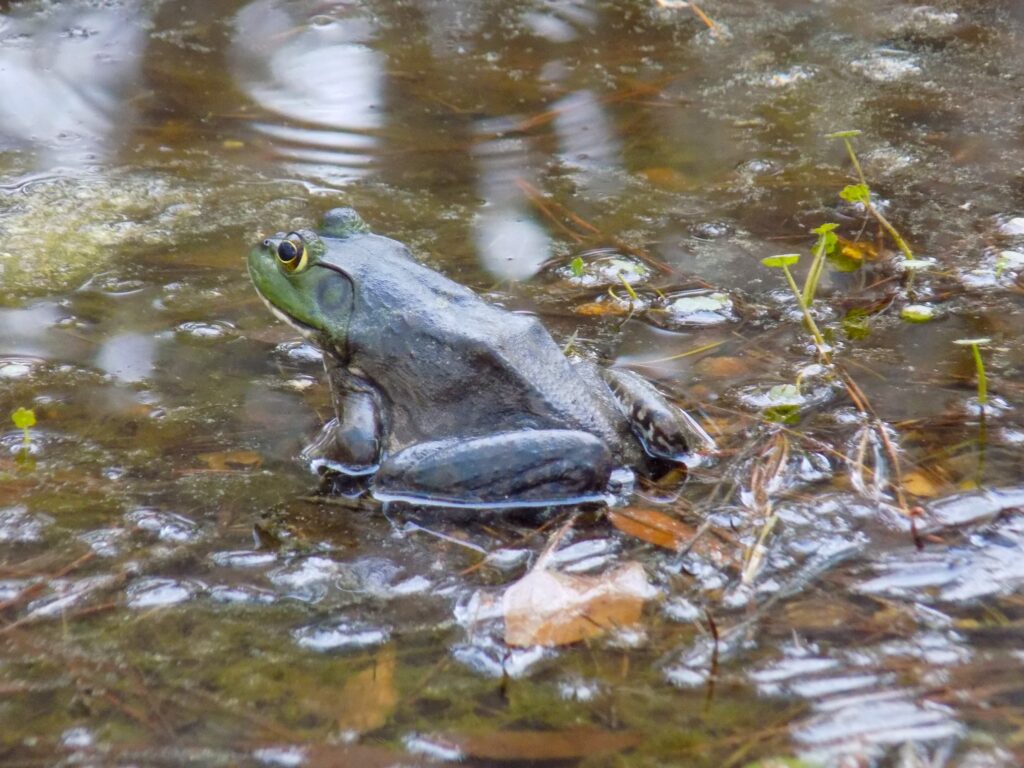



This week for Flora and Fauna Friday were listening in for the long-legged locals of genus Lithobates, the True Frogs.
The members of the genus Lithobates contains many of our most numerous and recognizable frogs. They’re designated as true frogs, with “true” here meaning something closer to “typical” or “normal”. Here in South Carolina we have nine species in the genus with eight in the Lowcountry. However, I’m just focusing today on the four species you’re likely to find on Edisto Island: Southern Leopard Frog (L. sphenocephala), Bronze Frog (L. clamitans clamitans), American Bullfrog (L. catesbeiana), and Pig Frog (L. grylio).
The Southern Leopard Frog is by far the easiest to identify, and probably also the easiest to find. They’re roughly three inches in length and have a distinctive pointed head, with their specific epithet “spenocephala” meaning “wedge-head”. They’re primarily bronze in color and sometimes a pine-green along the spine with two raised, ivory-white lines down each side of their back and small dark-brown blotches across the body. These blotches giving it the “leopard” part of the common name. The call of our Leopard Frog is unmistakable, sounding like someone flicking the teeth on a plastic comb except low pitched and variable in tone. Leopard Frogs can be found in pretty much any semi-permanent body of freshwater in the Lowcountry and are notably more tolerant of salt intrusion than most frogs.
The Bronze Frog is even more common than the Leopard Frog in certain areas and is the subspecies of the Green Frog found here in the Lowcountry. Bronze Frogs are usually about three to four inches in length and much smaller and browner than the Green Frog of the upstate. They have a bit of a point to their snout and raised ridges along the sides of their back. They’re an almost uniform dull-mocha or bronze color with a pale line above their lip. Their call is an easily recognized single note that can only be described as someone plucking a banjo string. Bronze Frogs can be found in much the same habitats as Leopard Frogs but seem to be a little more partial to woodlands and don’t have the same tolerance for salt.
The American Bullfrog is our third most common True Frog and definitely the largest, occasionally reaching eight inches in length but usually closer to five or six. Bullfrogs have a blunt snout, smooth back, and are generally a three color palette, with a sometimes mottled back and legs in brass, bronze, or green, a green face, and yellow throat. The song of the Bullfrog is a simple but loud and resonant “moo”, hence the “bull” part of the common name, or sometimes their call is a punctuated “jug-o-rum”, repeated once about every second. They’re commonly found in pretty much every permanent freshwater wetland, especially ponds.
The Pig Frog is our least abundant of the True Frogs but not a rare species. They’re about the same size as a Bullfrog at around four to five inches in length but tend to be smaller. The Pig Frog is similar in appearance to the Bullfrog too, with a smooth back (no ridges) and greenish coloration. However, the Pig Frog has a pointier snout and is usually a more uniform brass-green color across the body with small black spots. The serenade of the Pig Frog is, you guessed it, like to oink-ing of a pig. Usually just one or two “oinks” at a time but sometimes many. They’re found in permanent wetlands, usually large ponds, open swamps, and freshwater marshes. Pig Frogs are often easy to hear but hard to see, given their preference for swampy waterbodies.